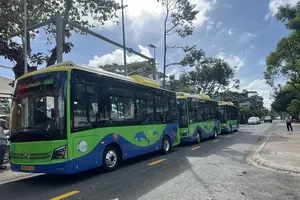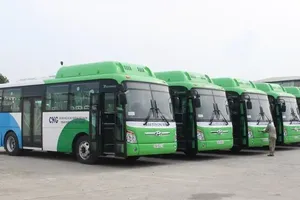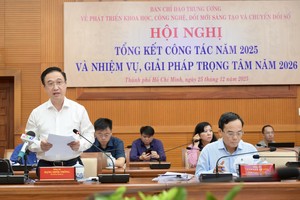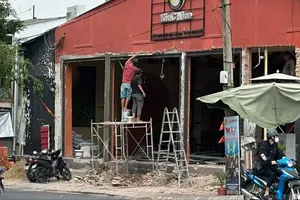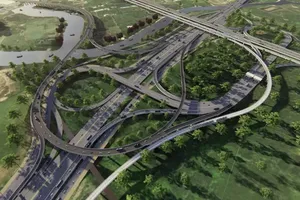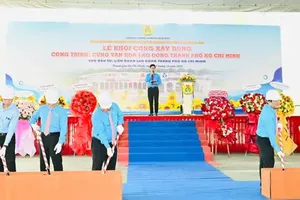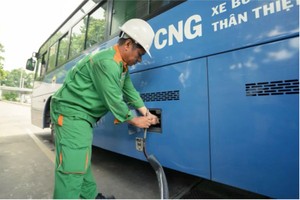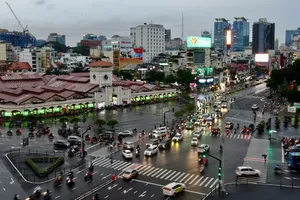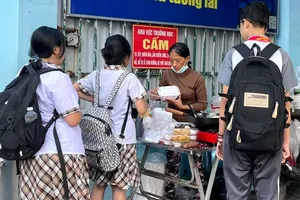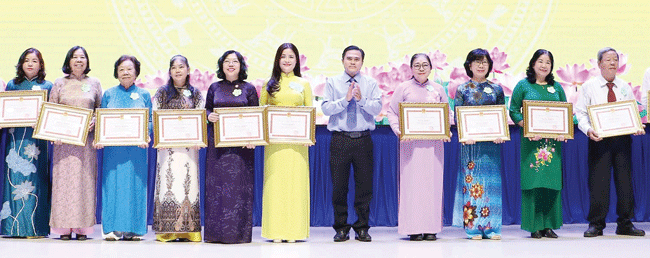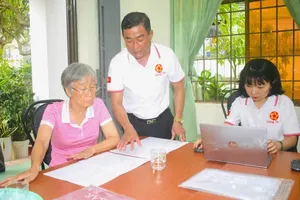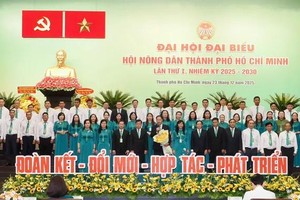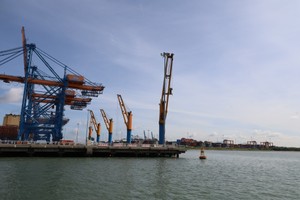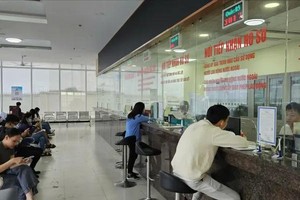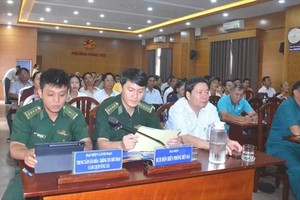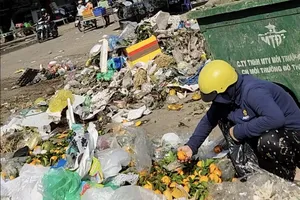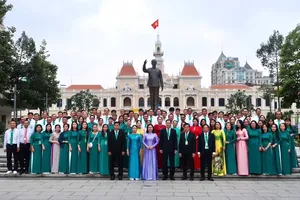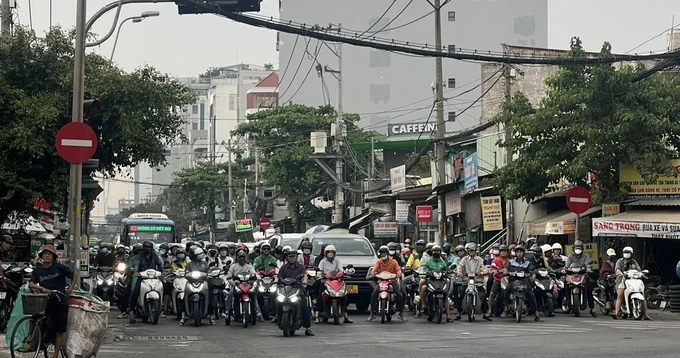
At year’s end, HCMC typically experiences heightened traffic congestion. However, following the enactment of Decree No.168/2024/ND-CP concerning administrative penalties for road traffic violations, effective January 1, 2025, traffic gridlock in HCMC has worsened, particularly at key intersections. Residents report daily commute times increasing two- to three-fold compared to the period preceding the decree.
Vo Van Tri from Tan Binh District recounted spending over an hour travelling only half the distance from his residence to his workplace on Vo Van Tan Street in District 3. The prohibition against driving on the sidewalk or turning right at red lights necessitates more waiting time, but with severely constricted road space and vehicular lane encroachment, motorcycles are left with no room to move,” he lamented.
Nguyen Thi Thu Ha from Go Vap District shared a similar story. Her commute to work in Tan Binh District, previously a 25-minute journey, now extends to over an hour, even during off-peak periods. Roads such as Nguyen Kiem, Pho Quang, and Pham Ngu Lao are consistently congested. “Vehicles crawl forward incrementally, and the expressions on drivers’ faces reflect their fatigue. Lanes are narrow, while intersections and traffic signals are excessively frequent,” Ha observed.
Statistics from the HCMC Department of Transport reveal that between early 2024 and September, while six congestion hotspots demonstrated improvement, ten remained problematic, and eight exhibited no discernible change.
Furthermore, key intersections such as the Dan Chu Roundabout in District 3, which is a convergence point for traffic from Vo Thi Sau, Cach Mang Thang 8, and Ba Thang Hai Streets, routinely experience gridlock. Truong Chinh Street in Tan Binh District, particularly the segment intersecting Tan Ky Tan Quy and Au Co Streets, presents a similar scenario, with cars and motorcycles vying for space under intense heat.
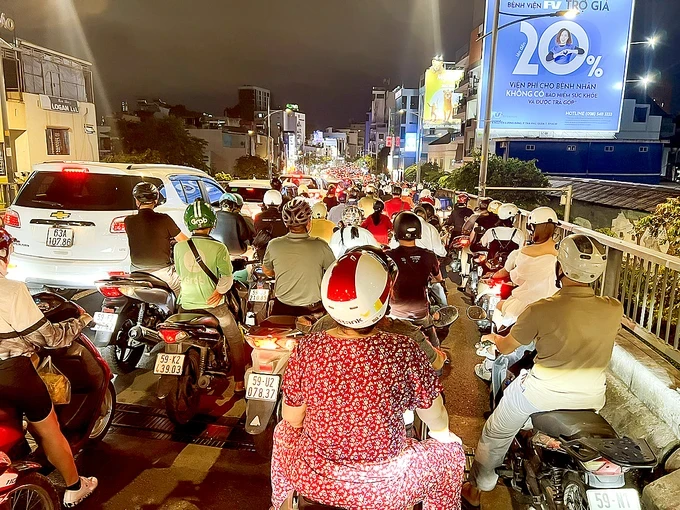
A noticeable feature of Decree No. 168/2024/ND-CP is the imposition of stricter penalties for offences such as driving on the sidewalk, turning right at red lights (without permissive signage), and disregarding traffic signals.
While this has ostensibly raised driver awareness, it has also exacerbated congestion on roads already characterized by high traffic volume and limited capacity. At numerous HCMC intersections, the absence of dedicated lanes for motorcycles or cars leads to chaotic intermingling of vehicle types, effectively immobilizing motorcycles.
The HCMC Transport Department is now in charge of over 1,070 traffic signal control points, only 227 of which are centrally controlled. The remainder are regulated with the assistance of traffic police, youth volunteers, and local militia. However, during peak hours, traffic volume surpasses the capacity of these personnel.
To mitigate congestion, HCMC has initiated pilot programs utilizing AI at intersections such as Hang Xanh, Nga Nam Dai Liet Si, and those on Pham Van Dong Street. This system dynamically adjusts traffic signal timings, improving traffic flow in the pilot areas. Additionally, the city is implementing automated traffic control projects along Vo Van Kiet, Mai Chi Tho, and Pham Van Dong Streets to collect real-time data and detect congestion.
The municipal Transport Department has also proposed the installation of supplementary right-turn signals at selective intersections to alleviate protracted waiting times. The application of AI technology is slated for expansion to other high-traffic areas, including Tan Son Nhat International Airport and key central intersections.
Beginning in 2025, the HCMC Public Security Department will manage traffic signals, while the city’s Department of Transport focuses on maintenance, data sharing, and overall management. This collaboration aims to improve traffic flow.
However, long-term solutions require substantial infrastructure investment, including lane expansion, ring roads, overpasses, and metro lines. Concurrently, raising driver awareness, improving public transport, and reducing private vehicle use are crucial. Addressing HCMC’s complex traffic congestion necessitates coordinated action from authorities, citizens, and all stakeholders.
In related news, on January 9, the HCMC Propaganda and Education Board, in conjunction with the HCMC Department of Information and Communications, held a press conference to disseminate information on the city’s socio-economic landscape.
At the press conference, Senior Lieutenant Colonel Le Van Hai, Deputy Head of the Traffic Police Division (PC08) under the HCMC Public Security Department, stated that since Decree No. 168/2024/ND-CP came into force, PC08 has received 87 reports, comprising images and information, pertaining to traffic safety violations. These reports are currently under verification and processing.
Regulations stipulate that compensation for individuals or organizations providing information on administrative violations related to traffic order and safety cannot exceed 10 percent of the administrative fine, capped at VND5 million (US$197) per case. However, PC08 has not yet disbursed any payments due to the absence of specific guidelines from the Ministry of Public Security.
